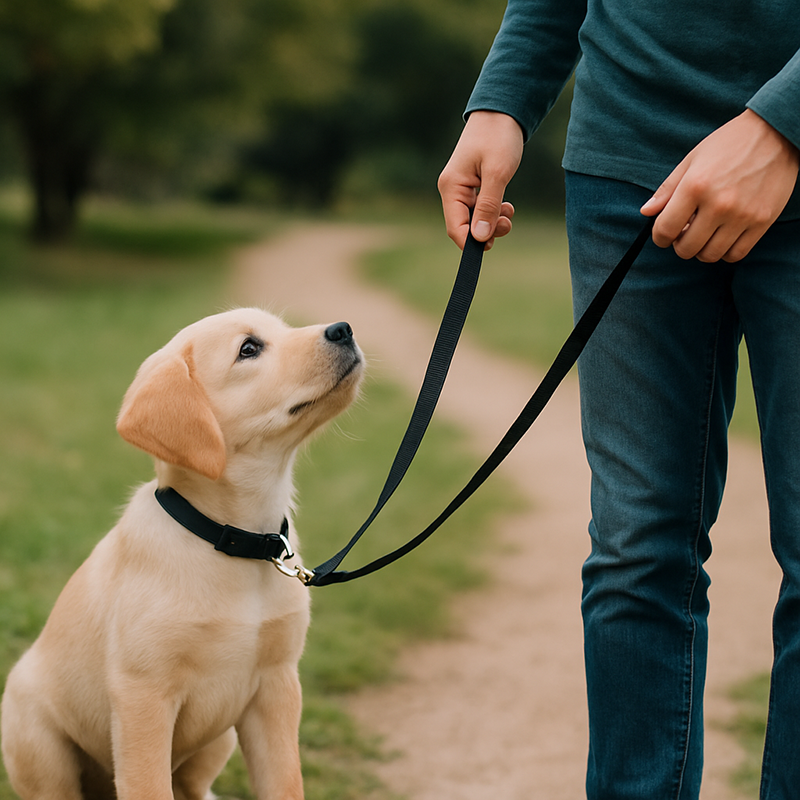
Walking your puppy should be a joy, not a battle. But for many new dog owners, leash training quickly turns into a struggle of tug-of-war, pulling, or sitting in protest. The good news? It doesn’t have to be that way.
In this guide, you’ll learn how to leash train your puppy step-by-step — using calm, positive methods that actually work.
🦴 Why Leash Training Matters
Leash training is about more than just getting your dog to walk beside you. It’s about:
- Teaching impulse control
- Keeping your puppy safe in public
- Building a calm, trusting relationship
- Making daily walks less stressful for both of you
🚶♂️ Step-by-Step Guide to Leash Training
1. Start Indoors First
Let your puppy get used to the collar or harness at home. Then attach the leash and let them walk freely with it.
📝 Tip: Praise them and give treats just for walking with the leash on, even before starting any commands.
2. Use High-Value Treats
Reward-based training works best — especially when teaching a puppy a brand new skill. Use small, soft treats your puppy loves.
3. Teach “Let’s Go”
Choose a command to start walking (e.g., “Let’s go!” or “Walk”). Use it every time before you begin moving.
📝 Tip: Start walking slowly and reward your pup when they walk beside you without pulling.
4. Stop When They Pull
If your puppy starts pulling — stop walking. Don’t yank the leash. Just freeze and wait. When the tension goes slack, start again.
This teaches that pulling gets them nowhere.
5. Practice Short Sessions Daily
Leash training takes time. Don’t expect perfect behavior in one session. Start with 5–10 minutes in a quiet place and build from there.
6. Stay Consistent with Direction
If your puppy constantly veers off path or darts, practice changing direction gently. This helps them focus on you instead of distractions.
7. Gradually Introduce New Environments
Once your puppy is doing well indoors, practice in the backyard, driveway, and finally the street or park. Introduce new places slowly.
🐾 Common Mistakes to Avoid
- ❌ Yanking or dragging the leash
- ❌ Using punishment when they pull
- ❌ Allowing pulling sometimes (it confuses the puppy)
- ❌ Skipping practice days
✅ Tools That Can Help
- Front-clip harnesses – Reduce pulling without choking
- Training clicker – Reinforces good behavior with sound
- Treat pouch – Keeps rewards accessible during walks
❤️ Final Thoughts
Leash training your puppy takes patience, consistency, and positivity. But once your pup learns to walk calmly beside you, walks become one of the best bonding experiences you’ll share.
Start slow, stay calm, and celebrate every little win — even a few good steps!
